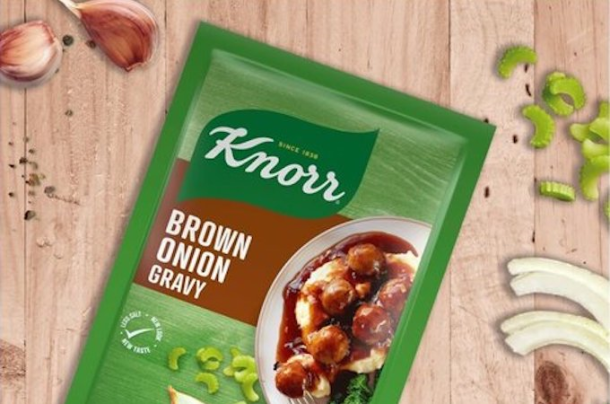
Retailers, producers of canned pilchards cushion consumers from cost hikes
By: Philippa Larkin – IOL Business
Retailers and producers in the canned pilchards value chain have sacrificed profit margins rather than pass on price increases to the consumer amid a cost-of-living crisis, according to the latest Essential Food Pricing Monitoring (EFPM) Report.
This comes as consumer decisions to swop more expensive items in their food basket for more affordable food items were likely to continue.
The report, released by the Competition Commission on Monday, tracks essential food prices and examines commodity cost drivers along the value chain.
The commission has been monitoring the price of essential foods since the onset of the Covid-19 pandemic in March 2020. Food price monitoring has continued during the inflationary period as households have come under severe pressure from rising prices.
The report noted, while lower food inflation may be a positive sign, food prices were still rising at a rate which may be a threat to food security. Further, cost pressures stemming from load shedding and transport costs have not abated, and the impact of drought conditions was likely to add to pressures throughout the value chain.
Consumers were swapping chicken for canned pilchards, the report notes as it did a deep dive into the value chain.
While chicken was still South Africa’s favoured protein source, canned pilchards had gained renewed popularity as consumers adjust their food expenditure in response to the rising cost of living and the effects of load shedding on their ability to store perishable foods.
There has been renewed popularity in tinned pilchards as reflected in the sales figures of the listed canned pilchard producers Oceana, which owns Lucky Star, as well as Premier Fishing.
Oceana’s Lucky Star sales volumes grew by 9% across local and export markets going from 8.8 million cartons in 2022 to 9.6 million in 2023.
Premier Fishing grew its sales of pilchards by 59% from 1 866 tons in 2022.
The report noted that due to fishing quotas these companies also had to import fish.
“The impact of the volatile and high cost of imported fish could be managed by large players to minimise its effect on the producers’ financial performance. How this is managed may have a bearing on consumer prices.
“Companies with an insufficient quota to meet consumer demand for their products can compete for third-party quotas held by entities that do not have vessels or manufacturing facilities. This is a widespread practice in the industry and may offset imported volumes albeit to a small degree,” it explained.
A large player that combined their fishing with imports to serve the domestic market could offset the cost of imported fish with the proceeds earned from exporting fishmeal and fish oil produced using locally caught fish.
“This may smooth the impact of higher imports on retail prices,” it said.
The revenue and profitability figures for Oceana and Premier Fishing showed that high import prices might, among other factors, have had an impact on their financial performance.
It said from a revenue perspective, both companies have experienced immense growth on the back of price increases combined with selling more volumes. This revenue growth pre-dates the inflationary episode that started in 2021 and has since accelerated.
From 2018 to 2020, Premier’s revenue grew by 12% and Oceana’s grew 14%. From 2020 to 2022 , Premier’s revenue grew by 187% and from 2020 to 2023, Oceana’s revenue grew by 41%.
The report noted despite this revenue growth, both companies have had shrinking operating margins since 2020. Premier’s operating margin went from 29.2% in 2020 to 8.6% in 2022 and Oceana’s operating margin went from 11.6% in 2020 to 7.6% in 2023.
“Both companies have not fully recovered some of their respective costs through higher prices, hence lower overall profitability. Absorbing cost increases, on the part of producers, is likely to have benefited customers on the retail shelf.”
It said like the producer price, the average retail price for canned fish was not particularly volatile. Canned fish had a long shelf life, therefore, stock could be held for extended periods with price changes implemented with longer lags.
In 2021, the average retail price of canned fish increased by 2.8% followed by 9.9% in 2022 and 2.3% in 2023. Average producer prices increased by 1.1% in 2021, 22.9% in 2022 and 2.6% in 2023.
Consequently, the retail-to-producer spread for canned fish had shrunk. The spread averaged 24% in 2021, 22% in 2022 and 18% in 2023. January 2024 remained at the same level.
“This suggests that retailers have also sacrificed margin in the same way that producers did in their treatment of the increase in costs of imports. During a period of cost-of-living pressures, shrinking margins throughout the value chain are an indicator that rising costs are being shared by all market actors, rather than simply being transferred to consumers,” the report found.
News Category
- International retailers
- On the move
- Awards and achievements
- Legislation
- Wine and liquor
- Africa
- Going green
- Supplier news
- Research tools
- Retailer trading results
- Supply chain
- Innovation and technology
- Economic factors
- Crime and security
- Store Openings
- Marketing and Promotions
- Social Responsibility
- Brand Press Office
Related Articles

Warning of Eskom collapse

Knorr recalls brown onion gravy sachets

Eskom CEO shares good news about load-shedding

Tax warning for South African businesses


